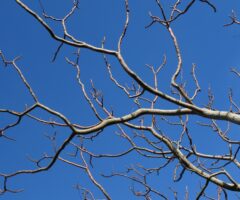The Pantone color of the year for your Michigan garden in 2023 is Viva Magenta, a reddish pink that is found often in nature. In fact, the color itself is based on the cochineal insect, which was used throughout history to make red dye.
When we saw this color here at Bay Landscaping, we realized how many of our annuals have a color close to viva magenta, which is an easy way to add this bright color to your own Michigan yard or garden!
Keep reading below to learn some of our favorite annuals that have a red, pink, or magenta hue.
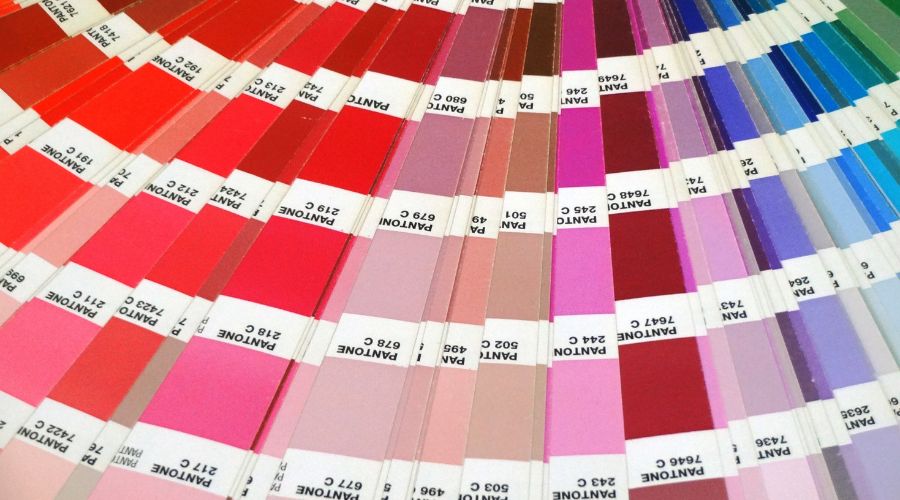
What is the Pantone Color of the Year?
Pantone Color Institute releases a “color of the year” at the beginning of each year. Often, this color is then seen in marketing, fashion, design, and trends for the year.
Pantone is known for their color matching system, created in 1963, which organized color standards through numbers and a chip format. The color institute is known for forecasting color trends.
Learn more about Pantone and the Pantone Color of the Year.

What is the Cochineal Beetle?
The 2023 color of the year, viva magenta, is reportedly based on nature and one of nature’s original dyes: carmine, derived from cochineal beetles. Cochineal beetles are small insects that are found on prickly pear cacti. Though they appear on the cactus as white spots (which is actually a white, waxy substance that they secrete to protect them from the sun), the insects have been harvested for thousands of years to produce a red dye.
According to the Pantone Color Institute, “Viva Magenta’s organic origins hail from the cochineal beetle. This insect produces carmine dye, one of the most precious, strongest, and brightest of the natural dye family.”
Since the viva magenta color is meant to be derived from nature, it makes sense that so many plants and flowers have a similar hue.
Pink, Red, Magenta, and Fuchsia Annuals
Below are some of the annuals that are part of our yearly annuals offering (usually in January and February of each year). As you can see, flowers in red, pink, magenta, and fuchsia shades are plentiful. Consider adding any of these for a fun pop of color in your Michigan yard or garden.
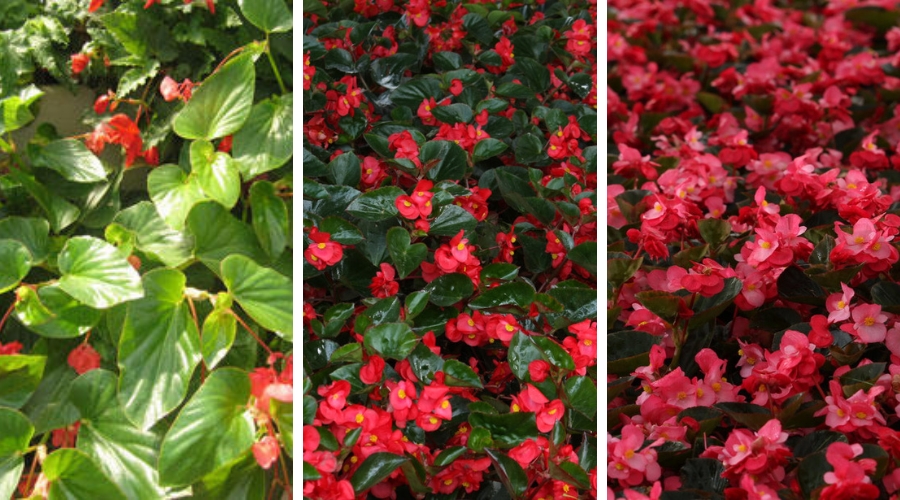
Begonias
Did you know that there are over 2,000 species of begonias found around the world? Also notable is that begonias do not have flower petals but rather something called “sepals.”
Our picks:
- Begonia Dragonwing Red
- Begonia Surefire Red
- Begonia Surefire Rose

Calibrachoa
Calibrachoas look similar to petunias, but they are a different genus in the nightshade family. They do well in hanging baskets or containers due to their trailing nature. This ornamental has only been available since the 1990s, but are popular do to the plant flowering all season long.
Our picks:
- Calibrachoa SUPERBELLS Cherry Red
- Calibrachoa SUPERBELLS Pink
- Calibrachoa SUPERBELLS Double Ruby
- Calibrachoa SUPERBELLS Blackcurrant punch
- Calibrachoa SUPERBELLS Watermelon Punch
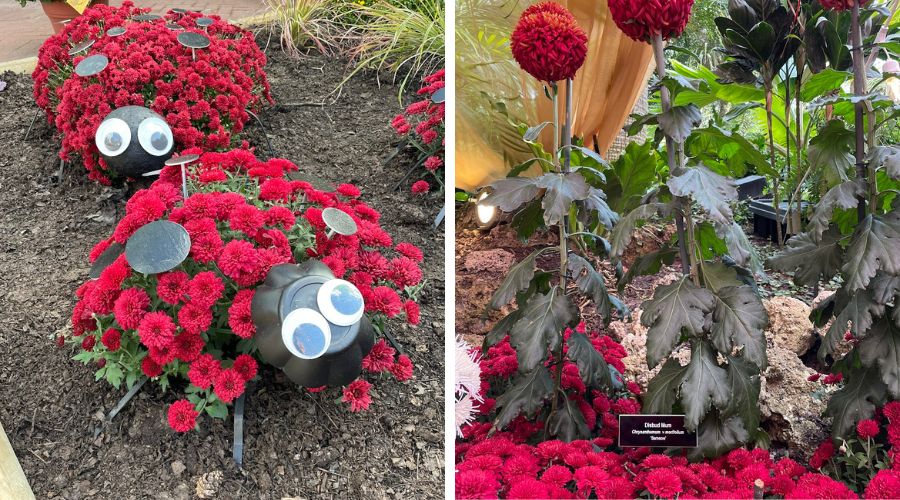 Chrysanthemums
Chrysanthemums
Chrysanthemums are always a great go-to annual flower. They prefer several hours of full sun to thrive, and each plant can grow 12 to 20 inches high and 20 inches to 2 1/2 feet wide.
As you can see in the images from Phipps Conservatory, above, there are many unique ways to display mums!
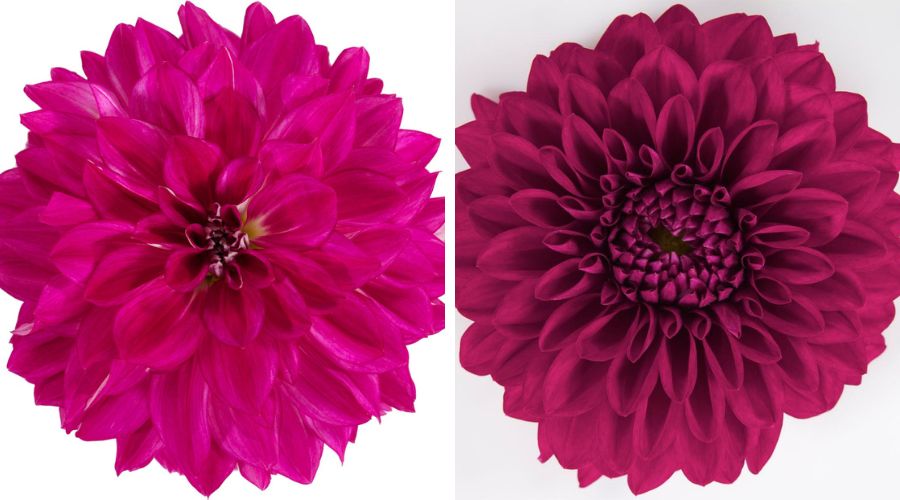
Dahlias
Dahlias are in the same family as sunflowers and daisies and they are known for flowering in midsummer and later. They do best with plenty of water and full sun. They can be grown in the ground, or, if a medium or dwarf-size variety, can be planted in containers.
Our picks:
- Dahlia DALINA Grande Cardena
- Dahlia DALINA Grande Castillo
- Dahlia DALINA Grande Mendoza
- Dahlia DALINA Grande Bonita
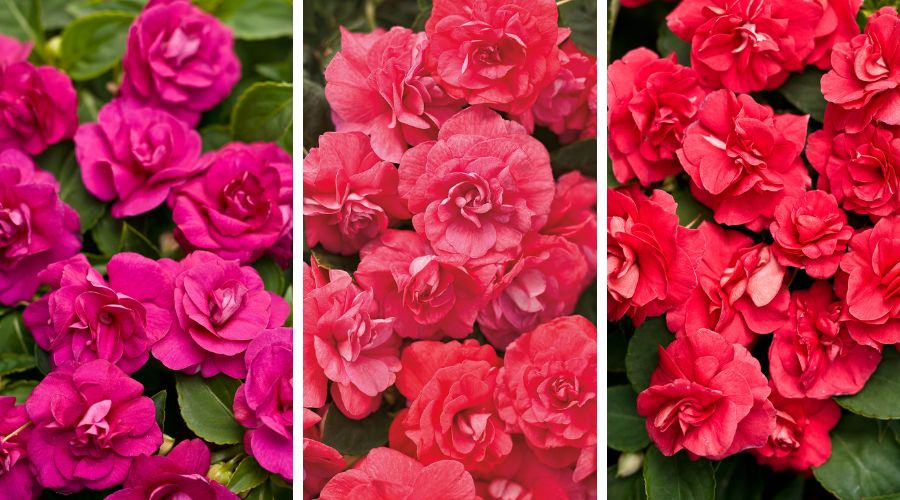
Impatiens
Impatiens are a popular annual, in part because of their ability to flower in part or full shade from spring through fall. Also known as “busy Lizzy,” they are often planted in garden beds, as well as containers, hanging baskets, window boxes, and more. It’s best to plant them once the soil has warmed to 60 degrees Fahrenheit.
Our picks:
- Impatiens ROCKAPULCO Purple
- Impatiens ROCKAPULCO Coral Reef
- Impatiens ROCKAPULCO Red
- Impatiens SUNPATIENS Compact Deep Red
- Impatiens SUNPATIENS Compact Royal Magenta
- Impatiens SUNPATIENS Compact Rose Glow
- Impatiens SUNPATIENS Compact Hot Pink
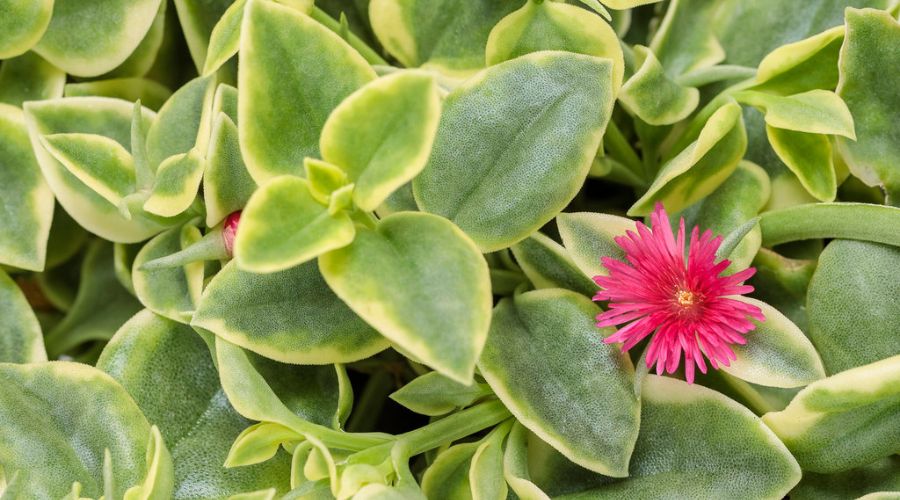
Mesembryanthemums
Mesembryanthemums are actually flowering succulents, as their leaves hold water. Also known as ice plants, they are low maintenance and work well in both gardens and containers. They won’t do well if overwatered or if there is a lot of standing water.
Our pick:
- Mesembryanthemum PROVEN ACCENTS MEZOO Trailing Red
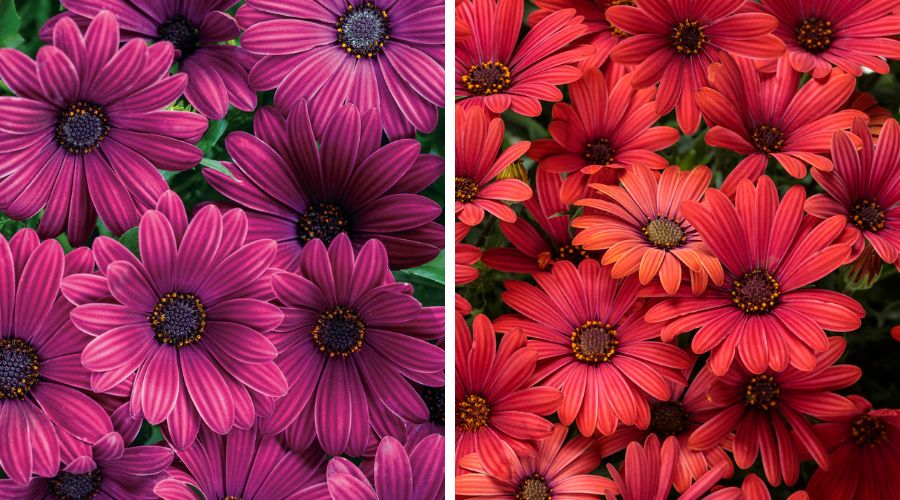
Osteospermum
Osteospermums look similar to daisies and have only been available since the early 1990s. They do well in part or full sun and can be planted in containers or in the ground.
Our picks:
- Osteospermum Bright Lights Purple
- Osteospermum Bright Lights Red

Geraniums
Geraniums are one of the most well-known annuals. They require at least 6 hours of full sun to thrive. They are heat and drought-tolerant, will bloom until first frost, and do well in average soil.
Our picks:
- Pelargonium BOLDLY Lavender Rose Geranium
- Pelargonium BOLDLY Hot Pink Geranium
- Pelargonium BOLDLY Dark Red Geranium
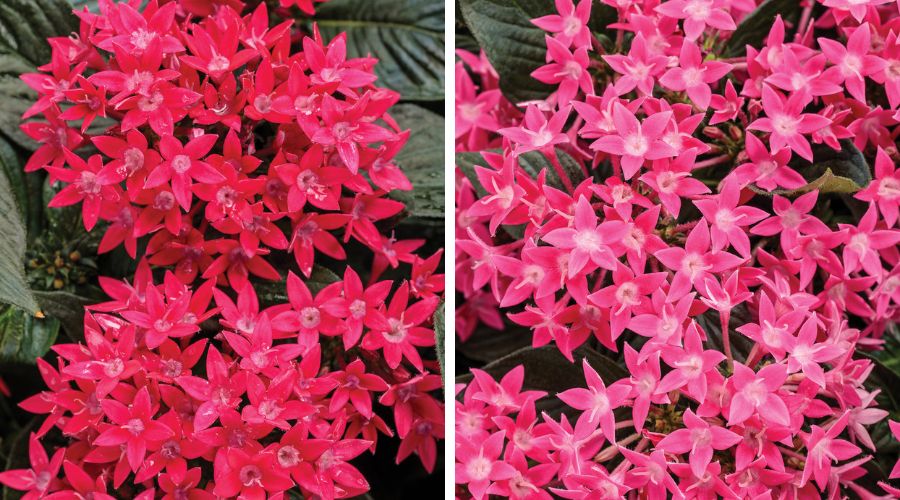
Pentas
Pentas have flowers with five-pointed petals, hence their name. Popular with pollinators such as hummingbirds and butterflies, pentas are also known as Egyptian stars. In some areas, they can grow into a large shrub. Here in Michigan, they work well in containers or garden beds.
Our picks:
- Pentas SUNSTAR Red
- Pentas SUNSTAR Rose
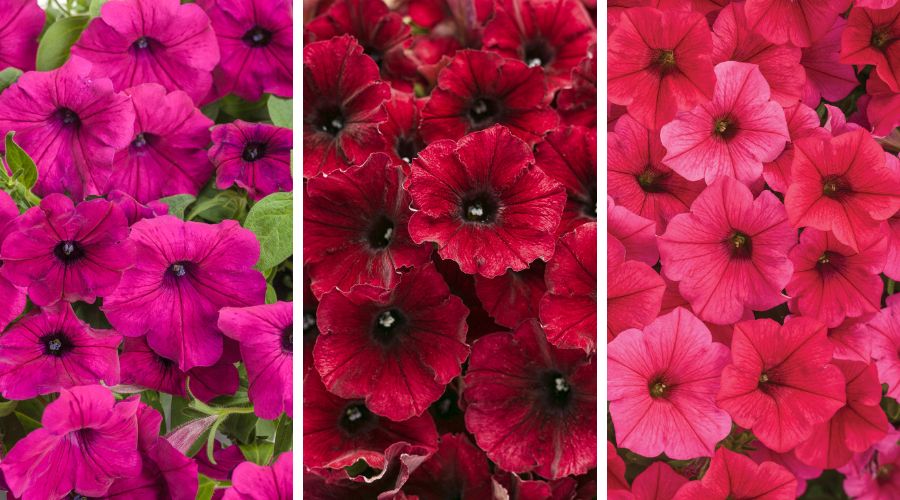
Petunias
Petunias will bloom from spring until frost, and are popular for hanging baskets and containers. They also work well as a groundcover. Petunias do best in full sun as they tend to flower less in the shade.
Our picks:
- Petunia SUPERTUNIA Royal Magenta
- Petunia SUPERTUNIA Black Cherry
- Petunia SUPERTUNIA Vista Paradise
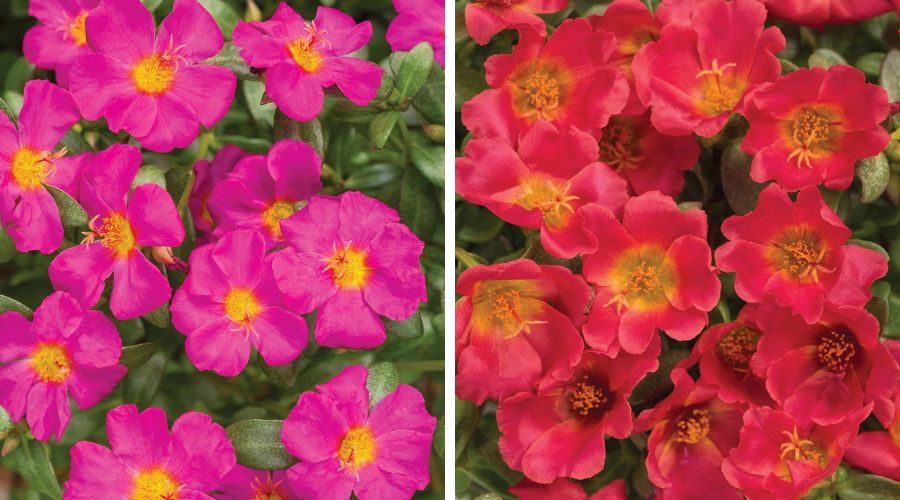
Portulaca
Also known as moss rose plants, this succulent is heat and drought-tolerant and provides flowers all summer long. Portulaca does well in poor soil where other plants might struggle, but does well in containers as well.
Our pick:
- Portulaca MOJAVE Fuchsia
- Portulaca MOJAVE Red
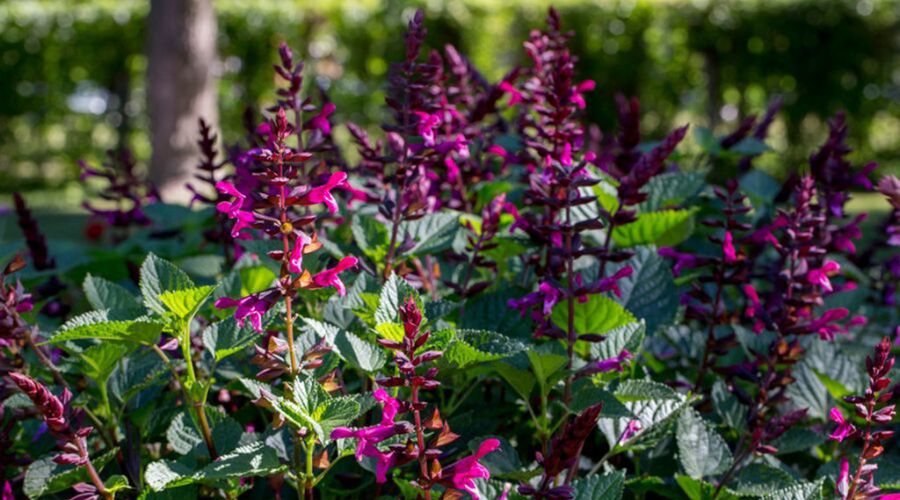
Salvia
Salvia, or sage, is a plant with fragrant flowers that is attractive to property owners and pollinators. The tubular flowers of the salvia plant smell pleasant, but the leaves act as a repellant to deer and rabbits.
Our pick:
- Salvia ROCKIN Fuchsia
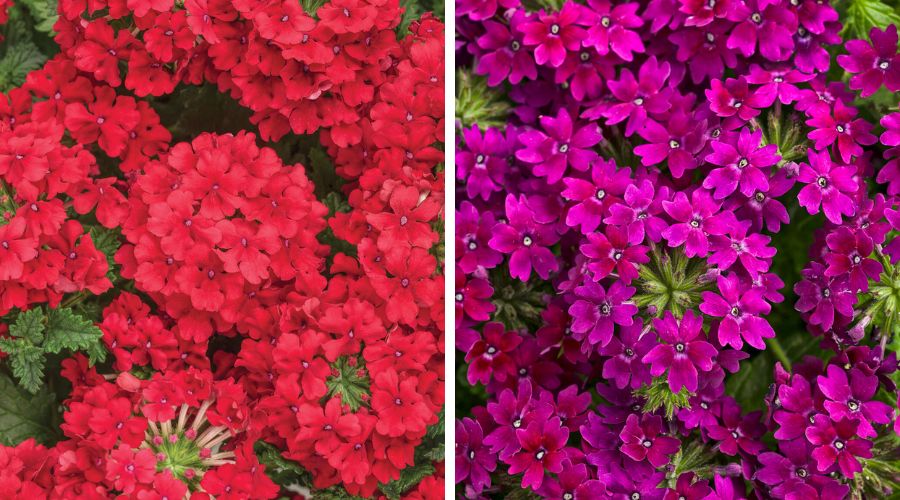
Verbena
Verbena plants do well with full sun, room to grow, and soil that is well-drained. This flower needs 6 to 10 hours of full sun, if planted in a location that’s too shady, the plant may not produce flowers. They benefit from pruning part-way through the growing season to produce new blooms.
Our picks:
- Verbena SUPERBENA Red
- Verbena SUPERBENA Royale Plum Wine
- Verbena SUPERBENA Raspberry
- Verbena SUPERBENA Scarlet Star
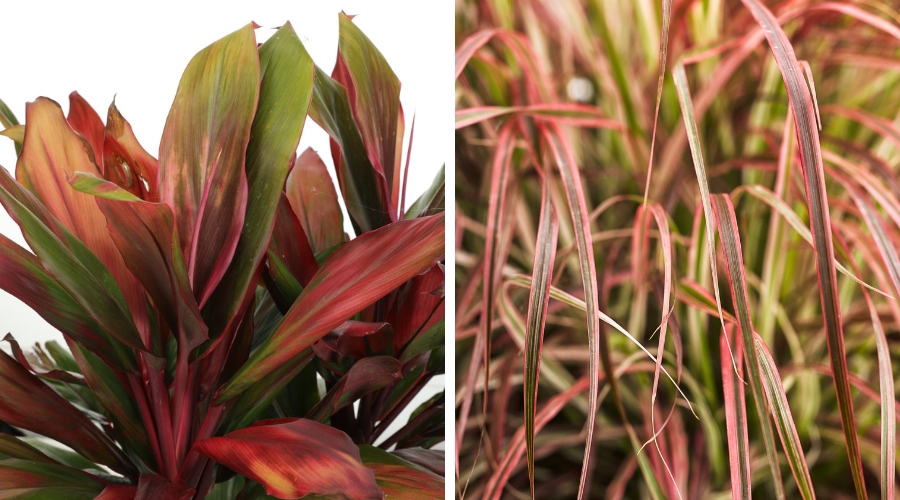 Other Options
Other Options
Want a more subtle splash of color? Check out this ‘Pink Zip’ cabbage palm or the ‘Fireworks’ Pennisetum (a red fountain grass), pictured above.
View the Bay Landscaping Annuals catalog for more information on these annuals and others. You can also read the pink or purple perennials that would bring a pop of color to your Michigan yard or garden
Visit the Bay Landscaping Nursery to Add Some Color to Your Michigan Garden
If you’re looking for bright pinks, reds, or magentas to add to your Michigan property, visit our nursery in Essexville. We have more than 70 acres of plants, trees, shrubs, and more, and can help you decide which plants would work best for your property.
We also have landscape supplies such as mulch and planters (including self-watering planters called AquaPots) for sale to complete your garden transformation. Some items are available in our online shop.






